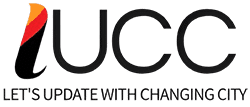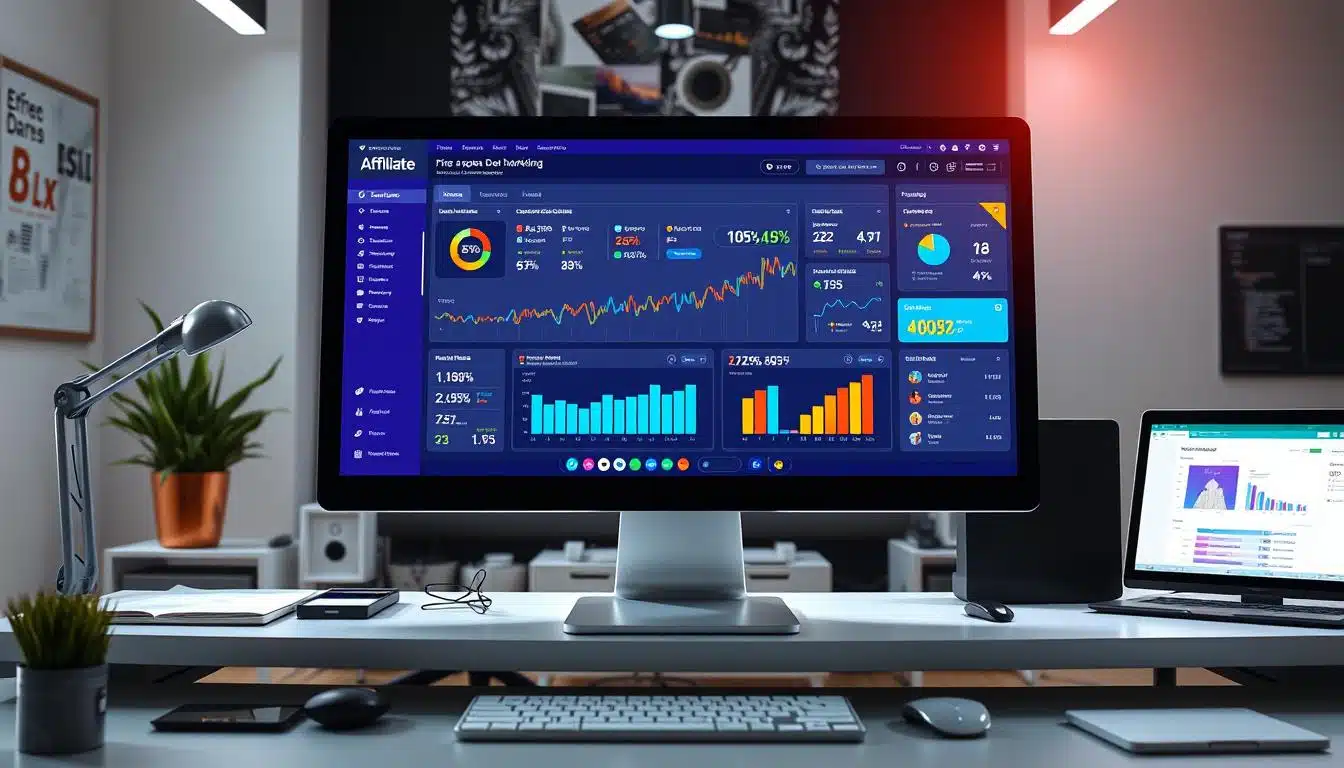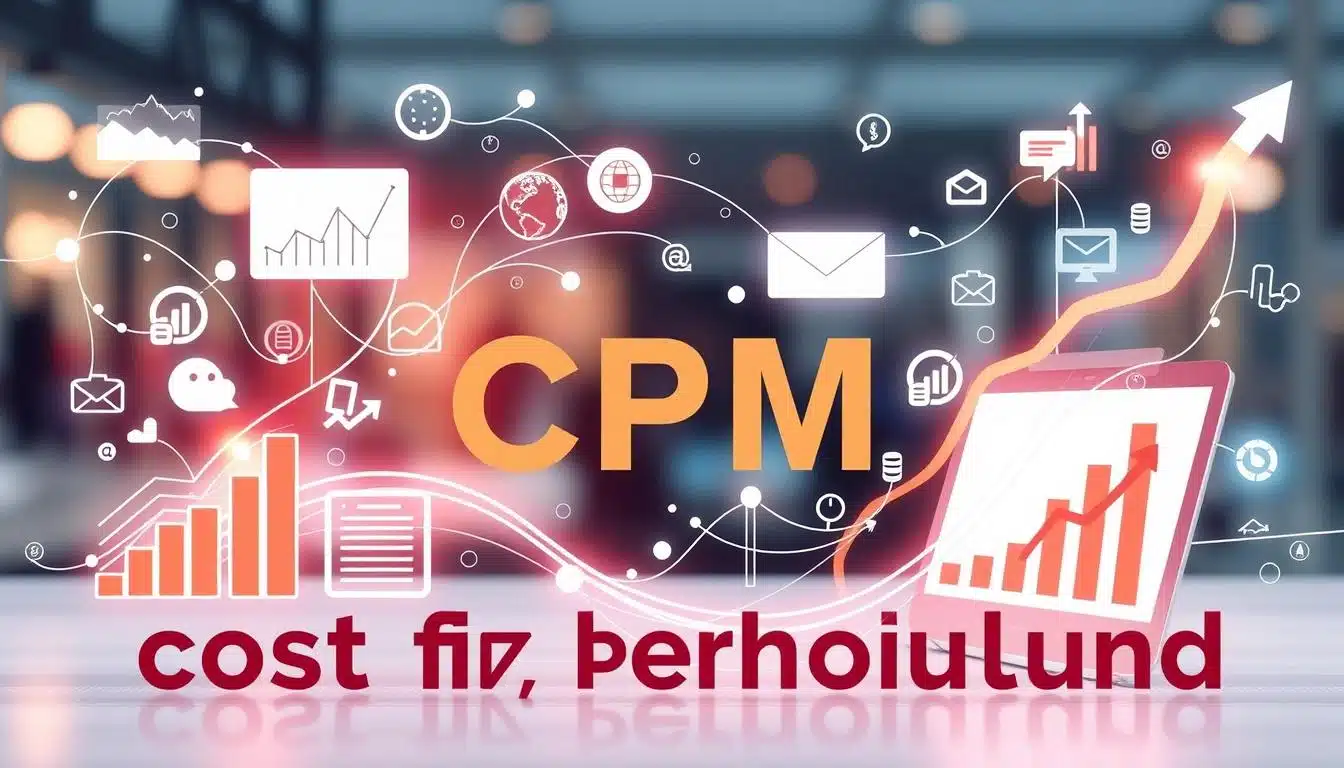PPC, or pay-per-click advertising, is a digital marketing strategy. Advertisers pay a fee each time their ad is clicked. It’s a popular way for businesses to reach customers and drive traffic to their sites or apps.
Advertisers create ads and choose who to target. They also decide how much they’re willing to pay per click. When someone clicks on their ad, they pay the agreed-upon cost. This makes PPC a measurable and efficient way to market online, as you only pay for valuable leads or conversions.
Key Takeaways
- PPC stands for pay-per-click, a digital advertising model where advertisers pay a fee each time their ad is clicked.
- PPC advertising allows businesses to reach targeted audiences on search engines, websites, and social media platforms.
- Advertisers create ads, select keywords or audiences, and set a bid for their desired cost-per-click (CPC).
- PPC advertising offers quick results and can be more cost-effective than traditional advertising methods.
- PPC campaigns require ongoing optimization and management to achieve the best results.
Introduction to PPC Marketing
Pay-per-click (PPC) advertising is a way for businesses to pay for each ad click. This helps them send targeted traffic to their websites. It’s a key part of digital marketing because it offers quick results, targets the right audience, and is affordable.
Definition of PPC and Its Importance
PPC is a common internet marketing model where businesses pay for each ad click. It lets them buy website visits instead of getting them for free. PPC ads show up above organic search results on search engines and other sites.
Comparison with Other Marketing Strategies
PPC is different from search engine optimization (SEO) and social media ads. SEO aims for organic search rankings, while social media ads are based on user interests. Unlike traditional ads, PPC only charges when clicked, making it more measurable and cost-effective.
“PPC advertising is a valuable tool to drive traffic and boost sales, with an estimated 5+ billion Google searches made each day.”
How PPC Advertising Works
Pay-Per-Click (PPC) advertising lets businesses pay for each ad click. They choose a campaign type, set targeting, and decide on a budget and bidding strategy. They also input their destination URL and create the ad.
The ad’s placement and cost are decided by an algorithm. It looks at the advertiser’s bid, ad quality, and how competitive the auction is.
The PPC Advertising Process
Platforms like Google Ads and Facebook Ads use an auction system. Advertisers bid on keywords or audience targeting. The algorithm then picks ads based on quality, relevance, and user experience.
This system favors high-quality, engaging ads. They get better placement and lower costs per click.
Factors Determining Ad Positioning and Cost
- Bid Amount – Advertisers set a maximum bid, showing the highest price they’re willing to pay for a click.
- Ad Quality – Platforms judge the ad’s relevance, creativity, and user experience. Better ads get better placement.
- Relevance – Ads that match the user’s search or browsing are shown more and at lower costs.
- Competition – More advertisers bidding on the same keywords or audience can increase costs.
Understanding ppc advertising works, ppc advertising process, and what affects ad positioning and ad cost helps businesses. They can make more effective PPC campaigns and get better returns.
What is Google Ads?
Google Ads, once known as Google AdWords, is the top search engine advertising system globally. It lets businesses create ads that show up on Google search pages and other Google sites. Google’s algorithms pick which ads to show based on several factors, like the advertiser’s bid and how well the ad matches the search.
Google Ads uses a Pay-Per-Click (PPC) model. This means advertisers only pay when someone clicks on their ads. It’s a way for businesses to reach people who might be interested in what they offer, with the chance to see quick results and control their spending.
| Key Metric | Explanation |
|---|---|
| Cost-per-Click (CPC) | The amount an advertiser pays each time their ad is clicked. CPC can vary depending on factors like keyword competitiveness and ad quality. |
| Click-Through Rate (CTR) | The percentage of impressions that result in a click on the ad. CTR is a measure of ad relevance and effectiveness. |
| Conversion Rate | The percentage of ad clicks that result in a desired action, such as a sale or lead generation. Conversion rate is a key metric for evaluating campaign success. |
| Return on Ad Spend (ROAS) | The ratio of revenue generated from ad clicks to the amount spent on advertising. ROAS is a critical metric for measuring the profitability of a Google Ads campaign. |
Google Ads is key for businesses wanting to boost their online presence and get measurable results from paid search marketing. It offers advanced targeting, performance tracking, and flexible budget controls.
“Google Ads offers businesses the ability to reach their target audience at the exact moment they are searching for relevant products or services, making it a powerful and cost-effective marketing solution.”
How PPC Works in Google Ads
In the digital marketing world, PPC, or pay-per-click advertising, is key for businesses. It helps them get more targeted traffic to their sites. The Google Ads platform is at the center, using the google ads auction to connect ads with the right audience.
The Google Ads Auction Process
The google ads auction is a complex bidding system. It decides where and how much ads cost on Google’s search pages. Advertisers pick keywords, set bids, and create ads. Google’s algorithms then check these, along with the google ads quality score, to figure out ad position and cost.
The google ads quality score is very important. It shows how good the ad, keywords, and landing page are. Ads with higher scores get better spots and cost less, as Google favors top-performing google ads advertising.
“Optimizing your google ads quality score is essential for success in the google ads auction and driving cost-effective google ads advertising.”
Knowing how the google ads auction and google ads quality score work helps businesses. They can make google ads advertising strategies that work well and bring good returns.
Conducting PPC with Google Ads
Effective google ads ppc marketing needs a smart plan. This includes bidding on the right keywords and making sure landing pages are great. By doing this, businesses can get more clicks, spend less on each click, and make more sales.
Bidding on Relevant Keywords
The key to a good google ads ppc campaign is picking the right keywords. Doing deep ppc keyword research to find the best search terms is key. Focus on long-tail keywords for less competition and broader keywords for more intent.
Using the right keyword match types helps show ads to the right people. Keep an eye on how your campaign is doing and adjust bids to make it better.
Optimizing Landing Page Quality
Landing page optimization is vital for google ads ppc success. Make sure landing pages are relevant, interesting, and easy to use. This boosts clicks and sales. Create pages that meet the needs of your audience.
Things like page speed, mobile-friendliness, and clear calls-to-action matter a lot. Keep testing and improving your landing pages to get the most from your google ads ppc campaigns.
| Key Factors for Successful PPC with Google Ads | Benefits |
|---|---|
|
|
By following google ads ppc best practices, like ppc keyword research and landing page optimization, businesses can run successful and profitable ads on Google Ads.
PPC Keyword Research
Creating a strong ppc keyword list is key to successful PPC ads. Good keyword research helps find the best terms to target. This leads to better results and more return on ad spend (ROAS).
Characteristics of an Effective PPC Keyword List
A good ppc keyword research strategy has a few important traits:
- Relevance: Keywords should match the advertiser’s products or services well. This ensures they’re interesting to the target audience.
- Exhaustiveness: The list should include many keywords, from high-volume to long-tail ones. This covers different search intents and behaviors.
- Continuous Refinement: The list needs regular updates. This keeps it fresh with new search trends and insights.
Using keyword research tools helps find the best keywords. This way, advertisers can improve their campaigns and get more from PPC ads.
“Effective keyword research is the foundation of a successful PPC campaign. It enables you to precisely target the right audience and drive higher quality leads and conversions.”
Spending time and resources on ppc keyword research pays off in the long run. It makes PPC campaigns more efficient, improves ad performance, and boosts return on ad investment.
what does ppc stand for in marketing
PPC, short for pay-per-click advertising, is a key digital marketing strategy. It helps businesses promote their products or services online. Ads appear on search engines, websites, and social media. Advertisers only pay when someone clicks on their ad.
PPC is a strong tool in online marketing. It helps businesses reach their target audience better. By bidding on keywords and optimizing ads, companies can show ads to the right people. This leads to more website visits, leads, and sales.
| Metric | Value |
|---|---|
| Ratio of Paid Search to PPC advertising | Paid Search, also known as PPC advertising or SEM, is an effective intent-based digital marketing tactic. |
| Cost calculation | CPC = Advertising Cost/Clicks. |
| Budget allocation | Budgets are usually set at the campaign level. In the provided example, the Iguana campaign drives the most sales, so the most budget is allocated to this campaign. |
| Ad copy variations | Best practice is to have at least three variations of ad copy in each ad group. |
| Keyword CPC management | CPCs are managed at the Keyword level in a PPC campaign structure. |
Understanding PPC is key for businesses to use it well in their digital marketing. It helps drive targeted traffic and achieve marketing goals.
“PPC ads can boost brand awareness by 80% and produce an average ROI of 200%.”
As the digital world changes, keeping up with PPC trends is vital. It helps businesses stay competitive and use PPC’s vast opportunities.
Managing PPC Campaigns
Managing your ppc campaign management well is key to success. Adding new, relevant keywords is important. This helps you reach more people and use your budget better.
It’s also vital to keep your ad groups and landing pages up to date. This makes your ads more relevant and your landing pages better for users. Both can improve how well your campaign does.
Continuous Keyword Expansion
- Always look for new, relevant keywords to add to your campaigns.
- Use tools to find long-tail and related keywords.
- Check your campaign data often to find keywords that don’t work and add them as negative keywords.
- Try different match types to see what works best for your keywords.
Refining Ad Groups and Landing Pages
- Look at your ad groups and see if you can make them more specific.
- Make sure your ads and landing pages match what you’re targeting.
- Keep testing and improving your landing pages to get more conversions.
- Use A/B testing to find the best ads and landing pages.
Following these tips for ad group optimization and landing page optimization can really help your ppc campaign management. You’ll see better results for your business.
“Effective PPC campaign management is an ongoing process of refinement and optimization. By continuously expanding your keyword list and fine-tuning your ad groups and landing pages, you can unlock new opportunities for growth and success.”
Top PPC Advertising Platforms
In the digital marketing world, pay-per-click (PPC) ads are key for businesses. Two top platforms are Google Ads and Facebook Ads.
Google Ads
Google Ads is the biggest PPC platform. It lets advertisers show ads on Google search and the Google Display Network. This way, businesses can reach people who are already looking for what they offer.
Google Ads offers detailed targeting and real-time tracking. This makes it a top choice for marketers who want to see results.
Facebook Ads
Facebook Ads help businesses promote on Facebook and Instagram. They can target users based on their interests and behaviors. This platform has advanced analytics and tools for optimizing ads.
Choosing Google Ads, Facebook Ads, or other top PPC platforms depends on your goals. The success of social media advertising comes from knowing your audience, creating great ads, and improving your campaigns.
Types of PPC Ads
Pay-per-click (PPC) advertising offers many ad formats. Each is designed for different marketing goals and what people like. You’ll find search ads, display ads, and social media ads.
Search Ads
Search ads are text ads that show up on search engine results pages. They appear when users search for something. With Google’s big share of the search market, these ads can reach people looking for what you offer.
Businesses can bid on certain keywords. This lets them show ads to people who are already interested in what they sell.
Display Ads
Display ads are images that show up on websites and apps. They use the Google Display Network to reach lots of people. These ads help with brand awareness, reminding people who’ve visited your site, or getting them to buy something.
Display ads come in many forms. They can be simple banners or interactive ads. This makes them great for grabbing people’s attention.
Social Media Ads
Social media ads let businesses target specific groups with their ads. They use data from platforms like Facebook and Instagram to send messages that really speak to people. This is key for getting people to take action.
With more people watching videos online, YouTube is a big deal for video ads. It has 2 billion users every month.
Using different PPC ads together helps businesses reach people at all stages of their buying journey. This can boost brand awareness, website visits, and sales.
Conclusion
PPC, or pay-per-click advertising, is a strong digital marketing tool. It helps businesses get more traffic, leads, and sales. Using Google Ads and Facebook Ads, they can target the right audience and track their success.
PPC marketing is fast, focused, and affordable. Knowing how it works is key for businesses to succeed. As digital marketing grows, PPC will stay important for reaching customers online.
Success in PPC depends on a skilled team. They need to target the right audience, use the right keywords, and keep improving campaigns. With Google Ads and other tools, businesses can get great results and meet their marketing goals.














Leave a Reply